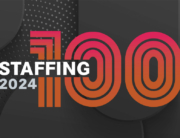Meet staffing’s new neighbor, the “gig economy.”
Short-term jobs were always here, but gig economy firms take them to the next level. Firms in this space create online platforms to connect labor buyers with workers, who can be independent contractors reached via a mobile app.
Gig economy companies include online staffing firms such as Upwork and Freelancer.com as well as crowdsourcing firms that divide large tasks to be handled online by many people. They also include firms that connect users to independent contractors for specific services such as Uber (drivers) and Instacart (grocery shoppers).
While some online services are more consumer focused, many also serve enterprise customers. And large staffing users can turn to freelancer management systems to engage and pay such workers online.
As more gig economy firms sprout, increasing numbers of US workers are warming to the idea of being independent.
Some in the staffing industry see opportunity in the gig economy, but some portions of it are not without risks. For example, Uber and Lyft are battling lawsuits by workers claiming they should be employees, not independent contractors.
The gig economy is the newest development in the world of work, and the neighborhood won’t be the same.
What’s in a Name?
Gig economy is one of several names used to describe similar things. Others include “on demand economy,” “collaborative consumption” and “sharing economy.” The last one is also used to refer to businesses such as Airbnb where an asset—living space, in Airbnb’s case — is shared, not labor.
Definitions vary, but work in this space is structured as small projects or relatively limited duration activities. Freelancing of all kinds fits into the gig economy, but so do Uber drivers and TaskRabbit taskers.
“The gig economy existed before any of these digital platform companies existed,” says Andrew Karpie, analyst/consultant at The Research Platform. “It’s just that over the past 10 years now, we increasingly have these digital platform companies that make it possible to basically extend what already was a gig economy in many new directions.”
In the past you could get a taxi ride, but Uber allows users to hail a car with just a mobile app. Drivers can use Uber to work on a short or longerterm basis, flexibility that is not possible in the taxi industry.
Karpie estimates perhaps a couple hundred online platform companies operate in the gig staffing space if you add up all the freelance marketplace platforms and other platforms that get people engaged in work on a gig basis.
Some firms provide for online work only; others enable independent workers to be sent to a specific site. Some provide a mix of services.
Staffing provider Nesco Resource was one of the first traditional staffing firms to partner with an online staffing firm when it announced an agreement with Field Nation in 2013.
“It’s an evolving and growing opportunity,” says Nesco President and COO Timothy McPherson. It has enabled Nesco to help clients on short order across a wide geography, including in cases where they might not previously have been able to serve them.
Short-term opportunities of less than a week are ideal for online staffing platforms while not necessarily for traditional staffing providers due to cost of service, McPherson says.
Nesco provides information technology, engineering and industrial staffing services. IT clients have been able to use a combination of traditional contingent staffing from Nesco and online staffing to get technology work done that would normally have called for a high-cost, third-party service provider.
And while Nesco provides opportunities for Field Nation, it can also engage Field Nation workers and become the employer of record when a buyer requests such services.
KellyOCG, part of Kelly Services, was another early mover, striking an alliance with oDesk (now Upwork) in late 2013. The deal started as a pilot with one customer, says Teresa Carroll, senior VP and general manager at KellyOCG. The company now has agreements with eight online staffing firms.
These moves follow a belief that talent works in many different ways, Carroll says. Online staffing can connect buyers to workers with in-demand skills and, in some cases, may be the only way to reach such resources.
“The key thing is that customers have to change in a number of ways,” Carroll says. Companies have to be able to send their work out in pieces and as project scopes versus by job description, and they have to deal with another layer of technology an online staffing firm or freelancer management system brings. That layer is in addition to vendor management systems and applicant tracking systems.
“Some online staffing firms are trying to make their technology be the primary driver of their business versus the talent community it supports, and they don’t want to make their technology sit behind another technology,” Carroll says. There has been some degree of integration between ATS and VMS. There’s not a lot of that with FMS, she says, although there may be in the future with IQNavigator’s partnership with Work Market and Beeline acquiring Onforce.
Procurement departments also tend to want to reduce the numbers of suppliers, but many online staffing operations have a niche focus much like temporary staffing providers. Companies may miss critical talent if they close their minds to those options. One example of a niche online staffing operations is HourlyNerd, which connects users with MBA grads from top colleges.
Growing Interest
There does appear interest for gig economy companies from both end user clients and workers.
Freelancer Ltd., which operates online staffing firm Freelancer.com, reported registered users (buyers and workers) rose 47% in 2014 to 14.3 million. Acquisitions represented 900,000 of that amount.
Certify, a travel and expense management software provider that tracks corporate travel expenses, reported 46% of total paid car rides in the first quarter were through Uber, up from 15% in the first quarter of 2014. Taxi rides dropped to an average of 53% of paid car rides in the first quarter from 85% in the first quarter of 2014.
To Use or Not to Use?
The gig economy’s surge comes as more workers express interest in being independent.
MBO Partners, a provider of back office services for independent consultants and contractor management services for companies, released a report that estimates the number of “solopreneurs” in the US will rise to 24.5 million in 2019 from 17.9 million in 2014. A soloprenuer is someone who works as an independent worker 35 or more hours per week.
The report also found “side-giggers,” those who work independently on a parttime basis — less than 15 hours per week — will grow to 15.4 million in 2019 from 12.1 million today.
MBO Partners President and CEO Gene Zaino says enterprises will more likely award an independent worker a project of significant value if there is a trusted reference point — for example, if they were referred by someone who has worked with the enterprise before. Enterprises are also more likely to use side-giggers for smaller, tactical work rather than larger strategic projects, where they would want a more dedicated resource.
“They are starting to build their own private communities, but they are based on hand-picked, qualified contract talent,” Zaino says. “I think an enterprise would see it as too risky to use a marketplace like [Upwork] or Fiverr for any strategic project.”
MBO Partners’ report found online marketplaces like Upwork and Freelancer.com scored low in terms of being a primary or secondary source of work. Just 3% of independent workers surveyed listed online talent marketplaces as their No. 1 source of work, and only 10% placed them in the top three. Although, they were relatively important for younger and more inexperienced independent workers.
But some see opportunity for these platform businesses.
“The amount spent on independent contractors is more than a trillion dollars a year in the US alone,” says David Francis, research associate at Staffing Industry Analysts. “Right now, only a fraction of a percent of that amount is being sourced through these new platform businesses. That’s a huge opportunity, and a lot of it is business-toconsumer spend that these gig platforms can address.”
Sellers on Fiverr — on an online platform for creative and professional services that start at $5 — are nonprofessional freelancers for the most part, Fiverr executive Constantine Anastasakis told attendees in a panel discussion last March at the Staffing Industry Executive Forum in Orlando. Workers use Fiverr to build a portfolio or as a secondary source of income.
MBO Partners’ Zaino says there appears a place for gig economy companies, and they can also serve to increase the acceptance of independent work.
“I do think there’s going to be certain levels of work that are going to be done in a more cost-effective fashion,” he says.
But along with increasing the awareness of an independent worker’s lifestyle, they will also increase awareness among independent workers and buyers of how an independent contractor relationship differs from that of a typical W-2 employee relationship.
There Goes the Neighborhood?
Misclassification is a concern for some firms in the gig economy. Several faced lawsuits as of press time by workers claiming they were misclassified as independent contractors when they should be employees. Most notable are Uber and Lyft, as mentioned earlier.
Judges in the Uber and Lyft cases each denied motions for summary judgements to dismiss the cases in March.
Other firms sued over independent contractor status of their workers as of press time include Instacart; Homejoy, a service connecting independent contractor home cleaners; Handy, for home improvement workers; and Postmates, which connects people with delivery workers.
Crowdflower, a provider of crowdsourced workers, was sued by workers claiming misclassification as independent contractors. A settlement in the amount of $585,507 was pending as of press time.
For Uber and Lyft, there have been local battles as well. One example is a lawsuit filed last December by the city of Portland, Ore., against Uber saying the company is in violation of city rules before the suit was dropped. However, some areas welcome them, albeit with regulations. Arizona Gov. Doug Ducey signed a law April that legalizes Uber and Lyft drivers in Arizona. The law mandates insurance requirements and screening rules for drivers, according to the Arizona Daily Star.
No Final Chapter
The effect of the gig economy is still developing, and challenges remain. Will legislation harm these online firms? How well will they integrate with the traditional staffing industry? We are learning more, but for now, the gig economy does not appear ready to move out of the neighborhood.







